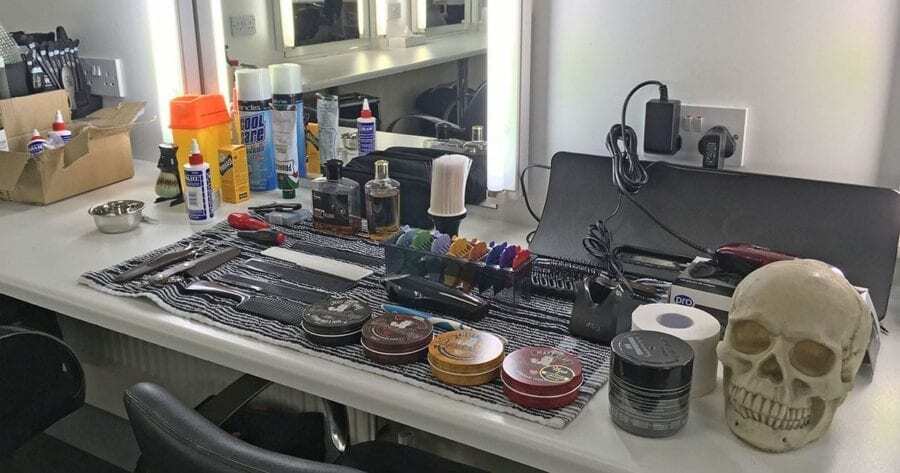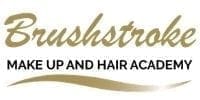That’s not a good situation to be in – but at least it’s easy to put right. Male grooming is big business and that’s reflected in work in the film, TV, stage and fashion industries. Having the barbering skills to tidy up a man’s hair and trim a beard are no longer nice-to-have skills. They’re vital for make-up artists.
As Richard says, “barbering skills are always in demand”. This is what he means:
- Tidying up male TV presenters and their guests
- Ensuring continuity with male performers on TV programmes as diverse as Peaky Blinders, Emmerdale, Strictly Come Dancing and Good Morning Britain
- Getting male performers and supporting artists camera-ready in films, fashion shows, photoshoots, music videos
- Your own private barbering jobs for ‘everyday’ clients, special events and weddings
This isn’t about major hair restyling (learning those skills can be next on your list). Basic barbering skills complement your job as make-up and hair artist.

Can a Man be Camera-Ready without Barbering Skills?
Well, no. As Richard says: “Every make-up artist knows that the camera picks up on every blemish – especially in HD. The same thing is true of hair. You can see every hair and whisker out of place – yet just 5 minutes with clippers, scissors and a comb can tidy it all up and get the man camera-ready.”
Make-up artists are more likely to spot barbering ‘imperfections’ – and with the right skills – offer a quick fix. Film, TV, stage, fashion and music productions don’t always have the budget for hair stylists let alone barbers. That’s a positive for make-up artists.
So to give you some idea of the basic skills you need, here’s a quick barbering masterclass by Richard with help from 2 obliging models, James and Jack.


Ears, Brows, Nape, Sideburns and Head
Excluding facial hair (eg beard and moustache) for a moment, basic barbering tasks can be usefully broken down into 5 elements: ears, brows, nape (neck), sideburns and head. With ears, brows and nape it’s mostly removing whiskers, stray hairs and general ‘fluff’. For the main head of hair, this is basically tapering – using the existing shape to trim the hair without taking too much off. The result is slimmer, neater, sharper.
As Richard reminds us, the difference between cutting men’s and women’s hair is usually – though not exclusively – down to length. “Cutting guys hair involves millimetre accuracy which means we work with clippers a lot. The length of trim, or cut you have in mind, helps you work out which grade to select first.
“There are 8 grades, giving you a range of cuts, starting with no 1 – which is very close-cropped. And I always remind my students that it’s better to take too little off rather than too much!”



Follow the Clues to the Best Cut and Trim
Follow the clues to the best cut and trim. For example, bone structure, which Richard considers important for students to students to understand. Taking notice of head shape, bone structure, crowns and hair lines will help you achieve the best results and most flattering profiles.
Then there’s the fact that hair grows in all directions – even the straightest hair will kick off at an angle. Working your clippers in the opposite direction to the growth (forward if it grows back and vice versa) is how you manage this. Something Richard demonstrated really well with James’ wavy and curly hair.


Shaping and Tidying Facial Hair
Shaping and tidying facial hair is an important barbering skill because like hair, beards and moustaches need to be looked after. Shampoo and condition, brush and cut regularly, using a bit of product such as beard oil – these are all straightforward, but valuable, barbering skills.
Our 2nd model, Jack, is very fond of his beard and though he agreed it was getting a bit untidy, he asked Richard to keep the overall look. Richard’s advice: “to leave the length and your moustache, Jack, but give you some overall shape to the beard. More definition round the cheek and a tidy up under the jaw line.” Richard also recommended keeping a ‘connection’ between Jack’s head of hair and beard through his sideburns (‘sidies’ in Richard-speak).
The overall result of Richard’s barbering skills is a neater profile but, essentially, it’s the same beard.


Final Checks
It’s important you use your barbering skills to complete the task properly. So 3 final tasks remain: blow dry the hair, use a little product and then carry out your checks.
“Let the hair dryer do the work,” advises Richard. “Dry in the direction the hair wants to go, running your fingers through the hair and using them like a comb or brush. You’ve cut the hair into shape so it should be easy to let it just fall into place.”
Richard uses just a little matt clay – not too much because you can always add but taking away is a bigger task! “Take a bit of clay on the end of your finger, emulsify it a bit (rather than rub it into your hands) so it stays on the surface of your hands. Next, just lightly dust the clay over the hair (don’t plonk your hands on his head) and use your hands to carve and sculpt – and create volume if you want.”
Finally, before he goes on set, just check your client is good to go – not a hair out of place. This is your work, so make sure you’re happy for him to leave your chair. Carefully brush the hair from his face, neck and any on his clothes once the gown is removed. Job done.


There’s just no reason to get turned down for a make-up job for lack of barbering skills. Or hairdressing and styling skills generally. We teach hair on all our make-up courses and have specialist hair and barbering courses too. That’s how committed we are to helping our students succeed in their chosen area of work.

Richard Jones
Richard Jones is one of our primary barbering tutors. He has been a successful barber for over 20 years and currently owns 2 shops in Sussex. He also provides training for a major TV channel. A well-respected barber and educator, Richard is knowledgeable about both the latest trends on the high street and specific needs of the entertainment industry.
1 Year
Hair & Barbering Course
ITEC Level 2 Diploma
An intensive course taught by Toni & Guy trained tutors to complete your training as a versatile artist.
Film, TV & Stage
There are endless options for makeup artists working in film and TV, from Sci-fi movie sets, to West End shows and soaps.
